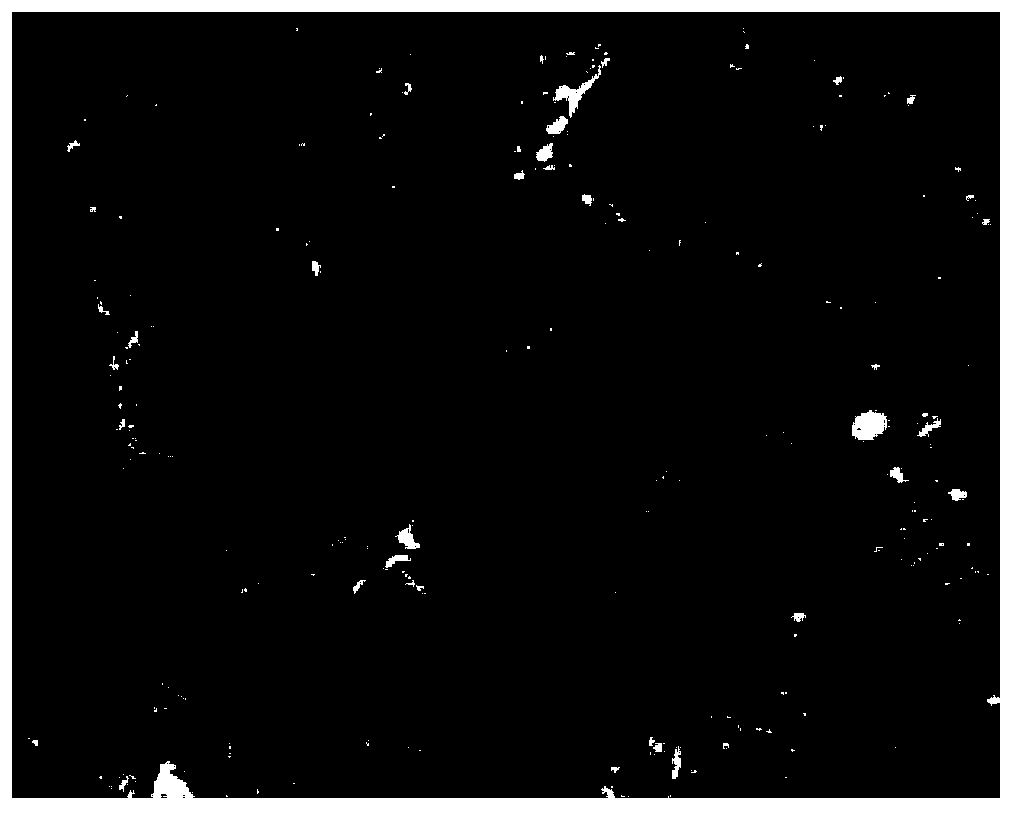Low temperature resistance straw mushroom bacterial and breeding method thereof
A technology of low temperature resistance and strain, applied in the field of bioengineering, to achieve the effects of good genetic stability, improved yield and quality, and expanded planting seasons
- Summary
- Abstract
- Description
- Claims
- Application Information
AI Technical Summary
Problems solved by technology
Method used
Image
Examples
Embodiment 1
[0057] (1) Construction of starting strain library
[0058] 16 Strains of Volvariella volvacea (V23, V9715, V9, V106, V97, V874, V5-2, VW, VG, VT-1, VT-2, V14, NO3, VB2, V28, V5), constructed a multi-genotype Starting strain library, the constructed starting strain library is rich in genotypes, including genotypes currently used in production. See Table 1 for the sources of the 16 starting strains.
[0059] Table 1 Departure strains and their sources
[0060]
[0061]
[0062] (2) Protoplast preparation
[0063] Inoculate 16 starting strains on PDA solid medium, culture at a constant temperature of 32±0.5°C for 3 to 4 days, take vigorously growing hyphae on PDA medium, inoculate in PDA liquid medium, and culture at 32±0.5°C , shake once a day in the morning and evening. The hyphae cultivated for 2 days were washed with sterile water, and then the surface moisture was sucked off with sterile filter paper for later use. Lyticase (purchased from Guangdong Institute of ...
Embodiment 2
[0093] (1) Construction of starting strain library
[0094] The construction of the starting strain library is the same as in Example 1.
[0095] (2) Protoplast preparation
[0096] Protoplast preparation method is the same as embodiment 1. The differences from the parameters in Example 1 are: the culture time of the mycelium liquid is 1d; when the mycelium is enzymatically hydrolyzed, 1mL of enzyme solution is added for every 150mg of mycelia for enzymolysis, and the enzymolysis time is 1.5h; the centrifugation speed of the filtrate is 3500r / min .
[0097] (3) Protoplast mutagenesis and mutant strain screening
[0098] The purified protoplasts of each starting strain were equally divided into 4 parts, which were subjected to electron beam mutagenesis, 60 C o - gamma mutagenesis, ultraviolet mutagenesis, EMS mutagenesis, screening of low-temperature-resistant mutant strains after mutagenesis, the specific steps are the same as in Example 1. The difference with the parame...
Embodiment 3
[0111] (1) Construction of starting strain library
[0112] The construction of the starting strain library is the same as in Example 1.
[0113] (2) Protoplast preparation
[0114] Protoplast preparation method is the same as embodiment 1. The differences from the parameters in Example 1 are: the culture time of the mycelium liquid is 3 days; when enzymatically hydrolyzing the mycelium, add 1 mL of enzyme solution for every 250 mg of mycelia for enzymatic hydrolysis, and the enzymatic hydrolysis time is 4 hours; the centrifugation speed of the filtrate is 3000 r / min.
[0115] (3) Protoplast mutagenesis and mutant strain screening
[0116] The purified protoplasts of each starting strain were equally divided into 4 parts, which were subjected to electron beam mutagenesis, 60 C o - gamma mutagenesis, ultraviolet mutagenesis, EMS mutagenesis, screening of low-temperature-resistant mutant strains after mutagenesis, the specific steps are the same as in Example 1. The differe...
PUM
| Property | Measurement | Unit |
|---|---|---|
| Diameter | aaaaa | aaaaa |
| Diameter | aaaaa | aaaaa |
| Diameter | aaaaa | aaaaa |
Abstract
Description
Claims
Application Information
 Login to View More
Login to View More - R&D
- Intellectual Property
- Life Sciences
- Materials
- Tech Scout
- Unparalleled Data Quality
- Higher Quality Content
- 60% Fewer Hallucinations
Browse by: Latest US Patents, China's latest patents, Technical Efficacy Thesaurus, Application Domain, Technology Topic, Popular Technical Reports.
© 2025 PatSnap. All rights reserved.Legal|Privacy policy|Modern Slavery Act Transparency Statement|Sitemap|About US| Contact US: help@patsnap.com



